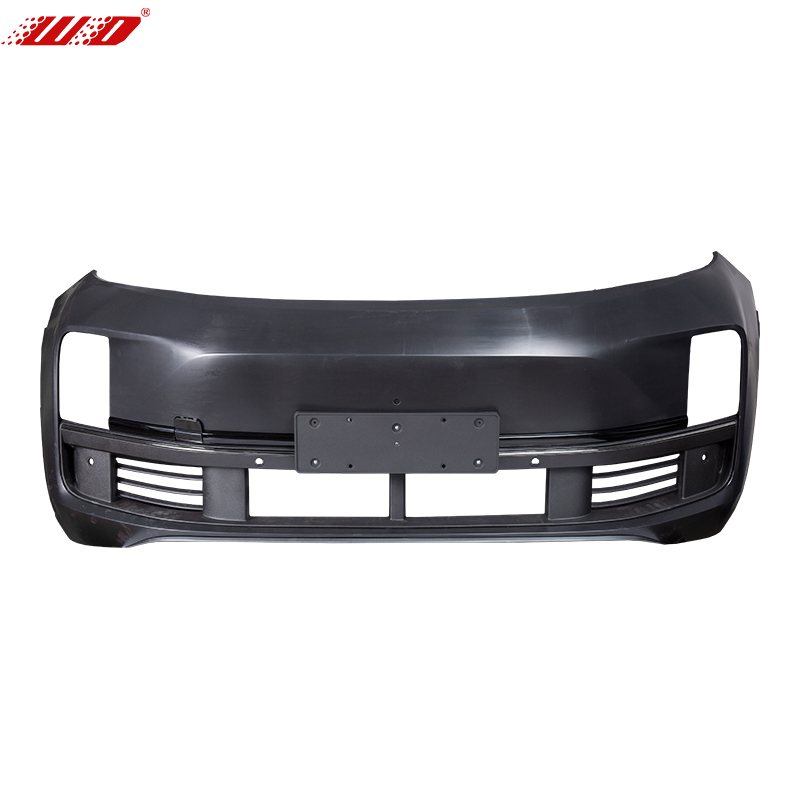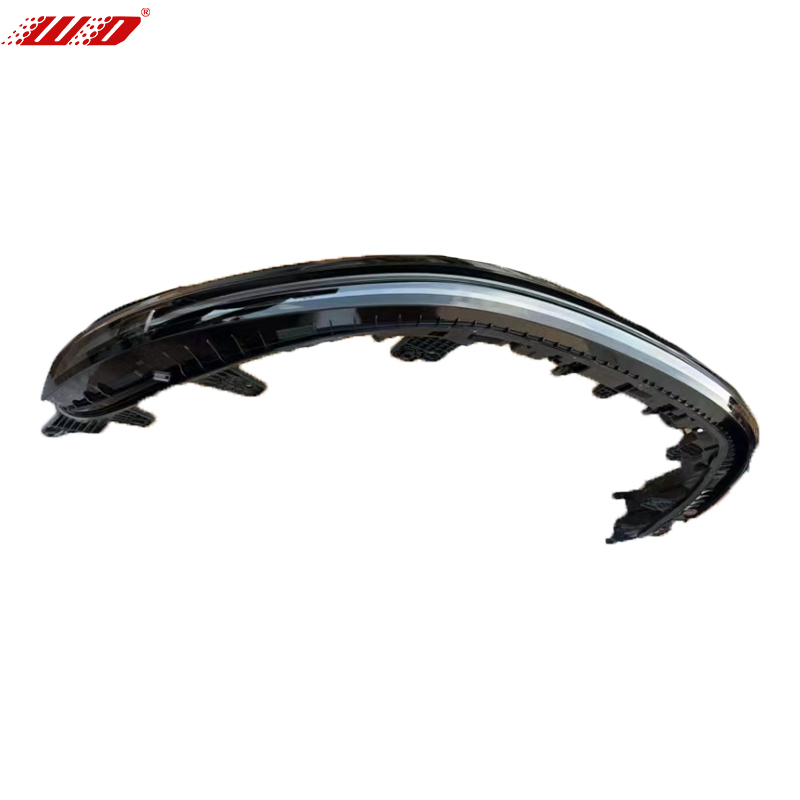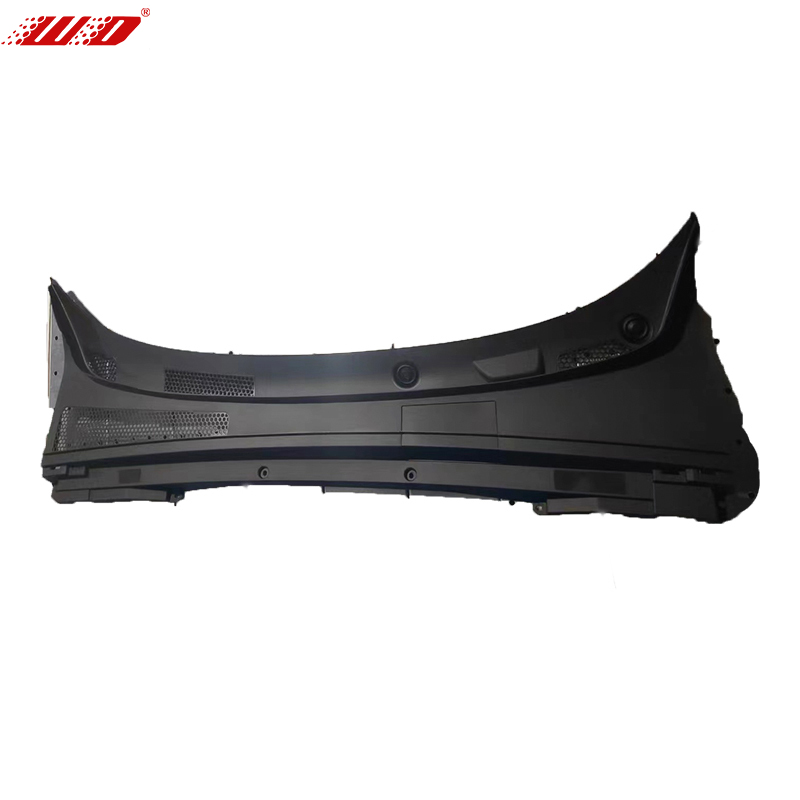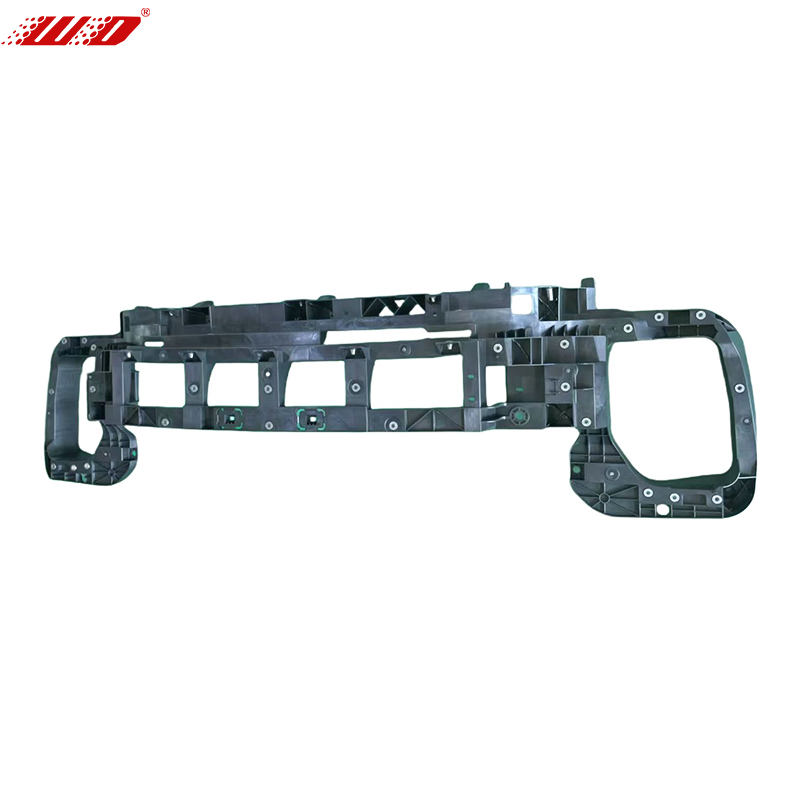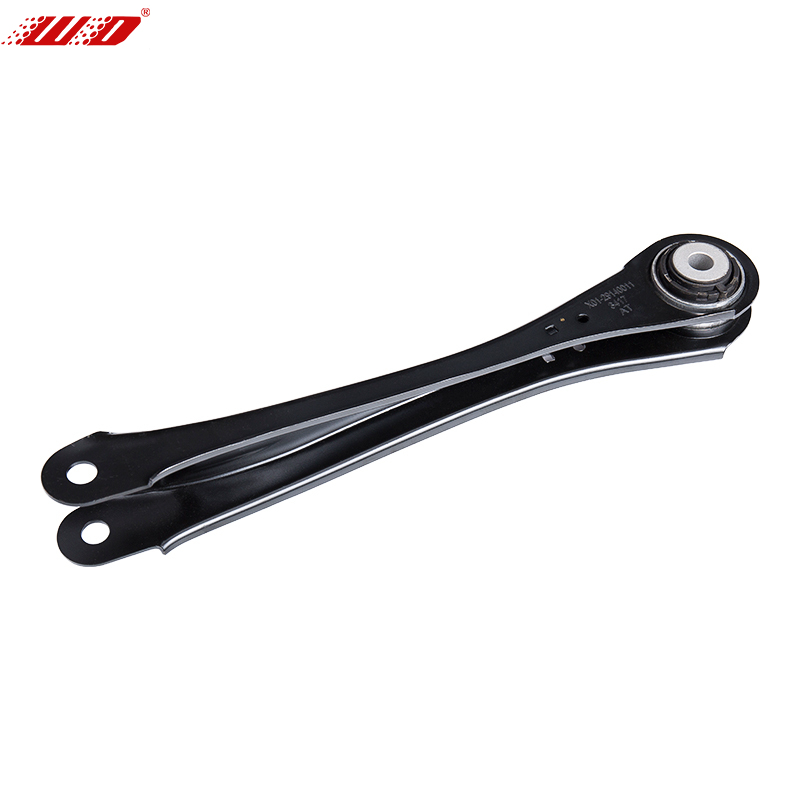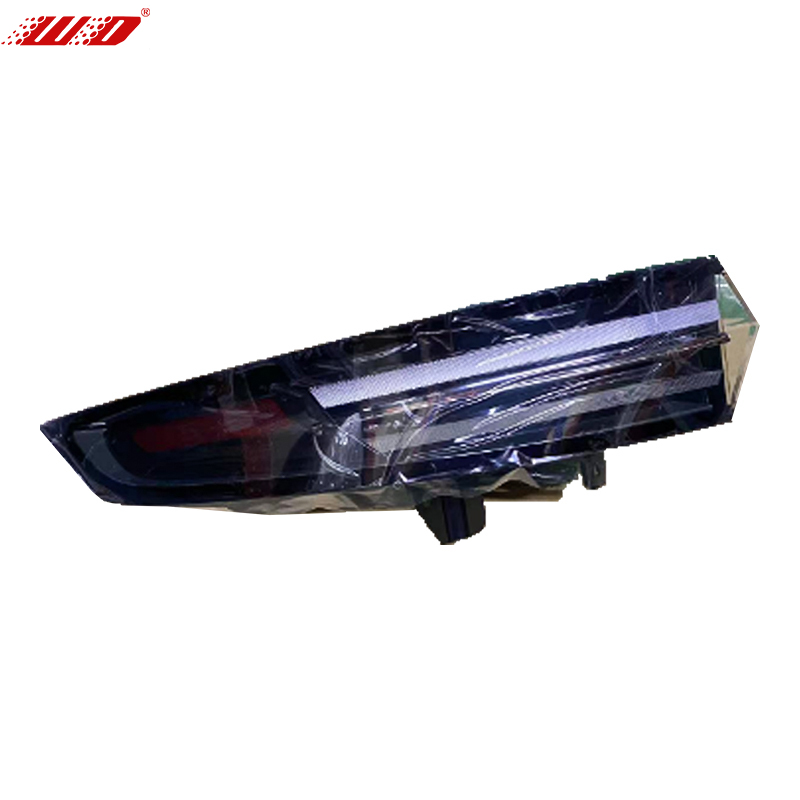Vehicle collisions—whether minor or major—often result in damage to a car’s body, ranging from cosmetic scratches to structural deformations. The process of repairing a car’s body is a multi-disciplinary task involving materials science, mechanical engineering, precision craftsmanship, and adherence to safety regulations. This article offers an in-depth, professional guide to auto body repair after a collision, addressing all relevant aspects including part replacement, materials and methods, safety implications, costs, certification standards, and frequently asked customer questions.
1. Can All Auto Body Parts Be Replaced?
1.1 Scope of Replaceable Parts
Technically, almost all auto body parts can be replaced. For example, for Li Auto Inc L6 Body System, these parts include::
Exterior Panels: Fenders, doors, hood, trunk lid, bumpers, rocker panels.
Glass: Windshields, side windows, rear windows.
Structural Elements: Frame rails, roof pillars (A/B/C), floor pan, subframe.
Plastic Components: Bumper covers, grilles, trim.
Interior Panels: Dashboard shell, door cards (after collision deployment or flooding).
1.2 Considerations in Part Replacement
Availability: For newer models, OEM parts are typically accessible. However, for discontinued models, parts might be scarce, leading to fabrication or aftermarket use.
Cost-effectiveness: Insurance companies weigh the repair vs. replacement cost. A damaged part might be repairable at a lower cost than replacing it.
OEM vs. Aftermarket: OEM parts assure compatibility and crash performance. Certified aftermarket parts may be acceptable, but low-quality imitations can compromise safety.
Structural Complexity: Some integrated parts (e.g., roof structures) require precision cutting and re-welding, making replacement more invasive.
2. After Repairs: Do Gaps, Deformations, or Safety Compromises Exist?
After an automotive collision, the quality of body repair plays a vital role not just in aesthetics but in overall vehicle safety and performance. Concerns about whether a repaired vehicle shows signs of panel misalignment, structural deformation, or compromised crashworthiness are legitimate and technically complex.
2.1 Panel Gaps and Surface Deformations
Why Proper Panel Alignment Matters
Panel alignment is not merely cosmetic. Uneven panel gaps can be early indicators of deeper issues:
Improper Frame Alignment: Unequal gaps between the hood and fenders or doors and pillars may indicate unresolved frame twist or torque deformation.
Compromised Crash Energy Flow: Inconsistent fitment alters how energy is absorbed and redirected during an impact.
Aerodynamics and Wind Noise: Misaligned panels create drag and turbulence, affecting vehicle performance and cabin quietness.
Water Leaks and Corrosion: Gaps can let water seep into structural cavities, accelerating corrosion and short-circuiting electronics.
Measuring and Evaluating Panel Gaps
Auto body technicians use digital gap gauges, feeler gauges, and OEM spec charts to restore uniformity. Tolerances for modern vehicles typically fall within ±1 mm of factory specifications. Repaired vehicles should visually and functionally replicate these specifications.
2.2 Signs of Improper Repair Work
Customers should look for red flags after repairs:
Stiff or Loose Door Operation: Difficulty opening or closing doors may indicate a bent hinge pillar or frame distortion.
Cracked or Uneven Paint Finish: Suggests substandard surface preparation or filler application.
Residual Waviness or “Oil Canning”: A distorted panel that flexes inward or outward is a sign of underlying structural instability.
Headlight/Taillight Misalignment: Often indicates damaged mounting points or surrounding body deformation.
2.3 Safety and Structural Integrity After Repair
Beyond visual defects, post-repair structural safety is paramount. Today's vehicle safety systems are engineered with precise energy pathways in mind. These include:
Crumple Zones: Designed to deform predictably and absorb impact energy.
Passenger Safety Cell: Must remain rigid to protect occupants.
Integrated Airbag Sensors: Located in bumpers, pillars, and doors. Misalignment or failure to recalibrate can delay deployment or cause malfunction.
Post-Repair Verification Methods
To ensure structural integrity, certified shops often employ:
3D Measuring Systems: Such as Car-O-Liner or Chief systems, which compare over 200 reference points to OEM geometry.
Ultrasonic Spot Weld Testing: Checks bond strength of structural joints.
Laser Scanning Alignment Tools: For subframe, suspension, and structural straightness.
Post-Repair ADAS Calibration: Ensures features like lane-keeping, automatic emergency braking, and adaptive cruise control function correctly.
2.4 Repaired vs. Factory-Built: Can the Car Be “As Good as New”?
The short answer: yes—if repaired correctly using OEM methods and materials.
OEM Repair Procedures: Manufacturers publish vehicle-specific guidelines covering cut-and-replace zones, spot-welding locations, adhesive types, torque specifications, and corrosion protection.
Welding and Bonding Accuracy: Improper heat application or incorrect bonding methods can create weak spots invisible to the naked eye.
Corrosion Prevention Steps: Modern repairs include reapplication of anti-rust primers, sealants, cavity wax, and undercoating.
However, vehicles repaired without adherence to these standards—such as using aftermarket shortcuts or skipping recalibration—may have compromised crash protection and long-term reliability.
2.5 The Role of Insurance and Certification
Insurance-Directed Shops: While convenient, some prioritize cost-cutting over OEM integrity unless held to standards by the customer.
I-CAR Gold Class & OEM-Certified Shops: These facilities are audited and trained to follow manufacturer-approved methods, significantly reducing the risk of residual damage or performance degradation.
Documentation: A high-quality shop will provide a post-repair scan report, before-and-after frame measurements, and ADAS calibration verification.
3. Does the Repaired Vehicle Meet Original Rigidity and Strength Standards?
After a collision, one of the most important yet often overlooked questions is whether the structural rigidity and material strength of the repaired vehicle can match that of the original factory design. This is not just about visual perfection—it directly affects crash safety, drivability, NVH (noise, vibration, harshness), and even fuel efficiency.
3.1 What Is Structural Rigidity?
Structural rigidity refers to the ability of a car's frame and body to resist deformation under force. It ensures:
Proper handling and predictable steering response
Accurate airbag timing and deployment
Controlled crumple zones in a crash
Minimized vibrations and body flex during driving
Vehicle rigidity is the result of precise material selection, structural layout, and assembly processes at the OEM level.
3.2 Can Post-Repair Strength Match Factory Standards?
Yes—but only under strict conditions.
To restore original strength and stiffness, repair procedures must exactly follow OEM repair specifications in four key areas:
1. Use of OEM-Grade Materials
Modern cars use a mix of advanced materials:
High-Strength Steel (HSS) and Ultra-High-Strength Steel (UHSS)
Boron steel in A- and B-pillars
Aluminum and Magnesium alloys in bumpers or subframes
Carbon-fiber-reinforced plastics (CFRP) in high-end or EV models
These materials cannot be replaced or repaired using traditional body shop techniques. For instance:
UHSS cannot be straightened—it must be cut out and replaced.
Heat from welding can destroy the temper of high-strength steel, reducing its crashworthiness.
Shops must order OEM parts or certified-equivalent materials and use precise welding, bonding, or riveting processes approved by the vehicle manufacturer.
2. Correct Welding, Bonding, and Fastening Techniques
Factory strength depends on:
Spot welds with exact spacing and depth
Structural adhesives with correct curing procedures
MIG brazing or aluminum MIG welding
Flow-drill screws and rivets in aluminum structures
Improper technique or shortcut methods (e.g. stitch welding or using incorrect filler wire) can result in weak joints, which fail in a crash.
Some structural joints are designed to absorb energy through controlled failure (e.g. crush boxes); incorrect repair may eliminate this feature, increasing risk in secondary collisions.
3. Precision Structural Measurement and Re-Alignment
A vehicle's frame or unibody must be returned to its factory geometry—down to the millimeter. Even slight deviations can affect:
Suspension alignment and tire wear
Crash sensor accuracy
Door, hood, and trunk operation
Steering and brake response
Professionals use computerized 3D measuring systems (e.g., Celette, Car-O-Liner) to compare key structural reference points against factory blueprints. Any misalignment must be corrected using hydraulic straightening on a certified frame bench.
4. Corrosion Resistance and Structural Longevity
OEMs treat structural components with:
E-coating
Zinc plating
Weld-through primer
Cavity wax sealants
These treatments prevent rust from forming inside critical structural sections, especially where water intrusion can’t be seen (e.g., rocker panels, pillars, subframes). Post-repair corrosion protection must match OEM processes to preserve long-term strength.
3.3 Quality Verification and Certification
Reputable repair shops perform:
Destructive weld tests to confirm bond integrity (on scrap metal)
Ultrasound or resistance checks on structural welds
Post-repair scan diagnostics to verify sensor, ECU, and safety system integrity
Documentation of OEM compliance (I-CAR Gold Class or OEM certification)
I-CAR and manufacturer certification indicate that technicians have been trained to meet these exacting standards—and that the shop is equipped with the tools to do so.
3.4 What Happens If Rigidity Is Not Restored?
Failure to restore OEM rigidity and strength can lead to:
Delayed airbag deployment
Excessive cabin intrusion during a crash
Uneven load transfer, resulting in unpredictable handling
Compromised structural collapse in secondary impacts
Reduced resale value and insurability
Even if the car looks flawless, its underlying skeleton may not behave as designed in critical situations.
3.5 Can You Tell If Strength Was Properly Restored?
As a vehicle owner, here’s what you can request:
Before-and-after frame measurement reports
Repair procedure documentation from the OEM
Material usage logs and welding/bonding methods
Corrosion protection steps taken
ADAS system recalibration records
If a shop refuses to provide this documentation, it's a red flag.
3.6 Final Word
A properly repaired car can match its original factory strength, but only if repairs follow exact OEM instructions and use certified materials, processes, and testing. Cutting corners—even invisible ones—puts the driver and passengers at risk in a future crash.
Demand transparency, ask for proof of structural and material compliance, and work only with certified repair facilities that understand the safety-critical nature of modern vehicle design.
4. Materials and Methods Used in Auto Body Repair
Auto body repair is a blend of engineering and craftsmanship, relying on advanced tools and material-specific processes.
4.1 Materials in Use
Steel (Mild, HSS, UHSS): Used for frame, roof, floor, doors.
Aluminum: Common in hoods, trunk lids, and premium vehicle structures.
Plastics (ABS, PP, TPO): Found in bumpers, grilles, trim, and interior components.
Glass: Safety-laminated or tempered for different vehicle zones.
Composite Materials: Fiberglass and carbon fiber used in sports cars or lightweight builds.
4.2 Common Repair Methods
Dent Repair: Using hammering, heating, suction, or Paintless Dent Removal (PDR).
Panel Replacement: Unbolting and re-installing damaged panels.
Filler Application: Resin-based fillers are applied, sanded, and shaped to restore contour.
Surface Preparation and Painting: Involves sanding, priming, base coating, clear coating, and polishing.
Frame Realignment: Done using laser-guided or hydraulic systems.
Sensor Calibration: Essential for Lane Assist, Adaptive Cruise Control, Parking Assist, and emergency braking.
5. How Much Does Auto Body Repair Cost?
Extent of Damage: Minor cosmetic fixes cost significantly less than structural repairs.
Vehicle Type: Premium vehicles use exotic materials and require specialized labor.
Location: Labor costs vary by state, city, and shop reputation.
Insurance: Deductibles, coverage type, and adjuster approval influence final out-of-pocket costs.
6. Why Is Auto Body Repair So Expensive?
Auto body work involves significant labor, equipment, and precision, contributing to the cost:
Labor-Intensive Work: Tasks like sanding, shaping, priming, and painting are time-consuming.
Advanced Materials: UHSS and aluminum require more costly methods.
Diagnostic Equipment: Recalibrating sensors, aligning frames, and scanning ECUs require specialized tools.
Paint Matching: Involves multi-stage painting, blending, and controlled curing environments.
Compliance with OEM Standards: Shops must follow strict protocols, often requiring training, certification, and documentation.
7. Is Auto Body Work a Hard Job?
Absolutely. The field demands both physical skill and technical knowledge. Key challenges include:
Interpreting Repair Diagrams: Understanding structural layouts and OEM guidelines.
Precision and Consistency: Tolerances must be within fractions of a millimeter.
Tool Proficiency: Includes welding, bonding, measuring, and painting.
Safety Awareness: Technicians handle heavy tools, toxic chemicals, and electrical systems.
Continual Learning: With new vehicle platforms and materials introduced each year, constant upskilling is required.
8. What Are the Benefits of I-CAR Certification?
8.1 What Is I-CAR?
I-CAR (Inter-Industry Conference on Auto Collision Repair) is a nonprofit that provides education, training, and certification to ensure high-quality collision repairs.
8.2 Benefits for Customers
Qualified Technicians: I-CAR certified professionals are trained in latest repair techniques.
OEM Compliance: Certified shops follow manufacturer repair procedures.
Insurance Collaboration: Most insurers prefer or mandate I-CAR Gold Class shops.
Peace of Mind: Reduces risk of improper repairs that could compromise safety.
8.3 Benefits for Technicians and Shops
Competitive advantage.
Access to repair databases and OEM networks.
Recognition in directories and insurance platforms.
Professional credibility and trust.
9. Frequently Asked Questions from Car Owners
Will My Car Be as Safe After Repairs?
Only if repaired properly with OEM methods and calibrated systems. Choose certified shops.
Will My Car Lose Value?
Yes, especially if structural damage occurred. This is known as diminished value, and in some cases, you can claim it from the at-fault party’s insurance.
How Long Will Repairs Take?
Minor repairs: 1–3 days
Major collision: 1–3 weeks
Parts delay or recalibration: Can extend timelines significantly
Can I Choose My Repair Shop?
Yes. Most states protect your right to select a shop, regardless of insurer preference.
OEM vs. Aftermarket vs. Salvage Parts—Which Is Better?
OEM: Most reliable and safest.
Certified Aftermarket: Acceptable, but verify quality and fit.
Salvage/Recycled: Budget-friendly, but risky for structural parts.
Auto body repair after a collision is a critical process that goes far beyond aesthetics. It encompasses structural safety, advanced material science, and meticulous engineering. Whether you're dealing with minor dings or a major collision, being informed empowers you to make decisions that protect your investment and your safety. Always prioritize certified technicians, OEM-compliant procedures, and clear communication with insurance providers. Your vehicle is not just a means of transport—it's a protective shell that deserves professional care.

 English
English русский
русский Español
Español
